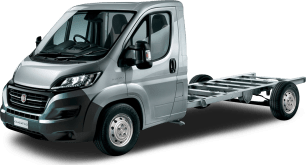With its relatively light 1816kg kerb weight and 3070kg GVM, our test vehicle has a substantial 1254kg payload rating which is almost 200kg higher than Toyota’s HiAce LWB (1055kg).
Its 1630kg braked tow rating is also higher than the HiAce’s 1500kg limit and with its 4700kg GCM (or how much it can legally carry and tow at the same time) the Trafic (like the HiAce) can haul its maximum payload while towing its maximum trailer weight.
Standard cargo bay access is through a single kerbside-sliding door or glazed swing-up tailgate, but a right-side sliding door and glazed symmetrical rear barn-doors with forklift-friendly 180-degree opening (the latter as fitted to our test vehicle) are available as options. The cargo bay walls and doors are lined to mid-height.
The load floor is 2937mm long and 1662mm wide, with 1268mm between the rear-wheel housings. So, it can carry up to two standard 1165mm-square Aussie pallets or up to three 1200 x 800mm Euro pallets, secured by a choice of eight load-anchorage points.
The cargo bay offers a competitive 6.55 cubic metres of load volume. Our example is fitted with a 12mm-ply non-slip floor kit and cube shelving kit provided by local industry supplier Autosafe. According to Renault, this tradie-focused set-up retails for $5254 including freight and installation.
The fixed two-passenger bench seat has a lap-sash belt for the central passenger and even someone my height (186cm) can get reasonably comfortable in the middle of a crew of three, albeit with knees competing for space with the prominent dash protrusion that houses the gearshift. By contrast, the outer passenger has ample knee and foot room.
The cabin is equally generous with headroom and displays optimum use of storage space. This includes a large bin in each door which can fit large bottles, with a smaller bin above.
There’s also small-bottle/cupholders on each side of the dash-pad plus a clamshell-lid compartment ahead of the driver, a large open tray in the centre (with two USB-C ports), small closable bins in the lower dash on either side of the driver and a single glove box.
If you choose the glazed bulkhead option, the centre-seat backrest folds forward to reveal an elaborate three-tier workstation, starting with a clipboard on top that can also be detached to use outside the vehicle or mounted vertically in the workstation to face the driver or passenger.
Beneath the clipboard is a hinged work desk, which when raised reveals a shallow felt-lined compartment that’s ideal for hidden storage of phones, tablets, lap-tops etc.
Folding the bench seat’s front-hinged base cushions forward also reveals a cavernous hidden storage compartment underneath.

